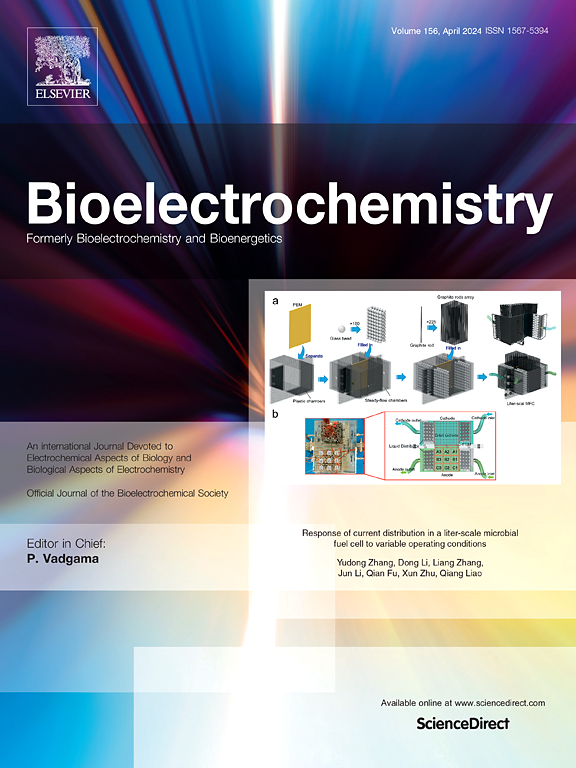Nitrate pollution accelerated the microbial corrosion of Fe0: A simulated corrosion verification for understanding marine corrosion phenomenological model
IF 4.8
2区 化学
Q1 BIOCHEMISTRY & MOLECULAR BIOLOGY
引用次数: 0
Abstract
In the seawater-sediment simulated immersion system, nitrate affected microbial corrosion of steel. The research studied the corrosion processes of Q235 steel influenced by nitrate exposure from aspects such as mineral evolution, environmental microbial cultivation, and interfacial electrochemistry. Nitrate pollution affected the corrosion acceleration (0.11 ± 0.01 mm*y−1, pitmax = 21.11 μm). Severe iron corrosion might not originate from the acidification of the interface microenvironment or the bioactivity of sulfate-reducing bacteria controlled by diffusion of inorganic nitrogen in the rust layer, but rather from the microbial metabolism of nitrate-reducing bacteria. The nitrate-addition had altered the composition of the microbial community attached to the steel surface, with a significant increase in the abundance of Achromobacter. The attached microorganisms regulated the Fe0 oxidation and the NO3− reduction on the Q235 steel surface to increase the pitting corrosion sensitivity and live bacteria number. The effect of nitrate on microbial corrosion of Fe0 in aerobic environment showed different understandings from the proposed corrosion phenomenological model.

硝酸盐污染加速了Fe0的微生物腐蚀:理解海洋腐蚀现象模型的模拟腐蚀验证
在海水-沉积物模拟浸泡系统中,硝酸盐对钢的微生物腐蚀有影响。从矿物演化、环境微生物培养、界面电化学等方面研究硝酸盐暴露对Q235钢腐蚀过程的影响。硝酸盐污染影响腐蚀加速(0.11±0.01 mm*y−1,pitmax = 21.11 μm)。严重的铁腐蚀可能不是由于界面微环境的酸化或硫酸盐还原菌的生物活性受无机氮在锈层中的扩散控制,而是由硝酸盐还原菌的微生物代谢引起的。硝酸盐的添加改变了附着在钢表面的微生物群落组成,显着增加了无色杆菌的丰度。附着微生物调控Q235钢表面Fe0氧化和NO3−还原,提高了点蚀敏感性和活菌数量。硝酸盐对好氧环境下Fe0微生物腐蚀的影响表现出与所提出的腐蚀现象模型不同的认识。
本文章由计算机程序翻译,如有差异,请以英文原文为准。
求助全文
约1分钟内获得全文
求助全文
来源期刊

Bioelectrochemistry
生物-电化学
CiteScore
9.10
自引率
6.00%
发文量
238
审稿时长
38 days
期刊介绍:
An International Journal Devoted to Electrochemical Aspects of Biology and Biological Aspects of Electrochemistry
Bioelectrochemistry is an international journal devoted to electrochemical principles in biology and biological aspects of electrochemistry. It publishes experimental and theoretical papers dealing with the electrochemical aspects of:
• Electrified interfaces (electric double layers, adsorption, electron transfer, protein electrochemistry, basic principles of biosensors, biosensor interfaces and bio-nanosensor design and construction.
• Electric and magnetic field effects (field-dependent processes, field interactions with molecules, intramolecular field effects, sensory systems for electric and magnetic fields, molecular and cellular mechanisms)
• Bioenergetics and signal transduction (energy conversion, photosynthetic and visual membranes)
• Biomembranes and model membranes (thermodynamics and mechanics, membrane transport, electroporation, fusion and insertion)
• Electrochemical applications in medicine and biotechnology (drug delivery and gene transfer to cells and tissues, iontophoresis, skin electroporation, injury and repair).
• Organization and use of arrays in-vitro and in-vivo, including as part of feedback control.
• Electrochemical interrogation of biofilms as generated by microorganisms and tissue reaction associated with medical implants.
 求助内容:
求助内容: 应助结果提醒方式:
应助结果提醒方式:


